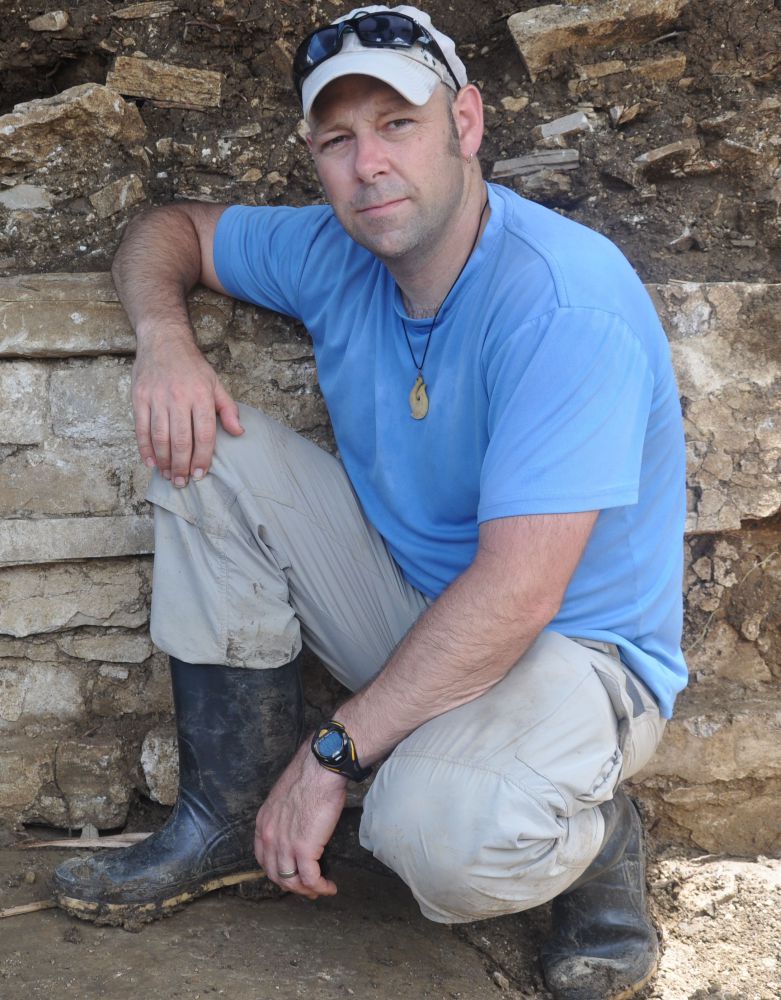
History Revealed

Doug Kennett knew maize became a staple crop among the Maya of the eastern Yucatan roughly 4,700 years ago. But where the Maya came from and when they moved into the area were open questions.
That’s no longer the case. A new study co-led by Kennett, a professor of anthropology at UC Santa Barbara, focused on ancient DNA (aDNA) from two rock shelters in Belize reveals a previously unknown migration from as far away as South America some 5,600 years ago that contributed more than 50% of Maya ancestry today.
That migration, he said, correlates with the introduction of improved varieties of maize and the beginning of forest-clearing and the first small-scale maize cultivation. In short, it signals the genetic origins of the Maya.
“Our evidence for migration coincides with the first evidence in the Maya region for fully domesticated varieties of maize as well as manioc and chili peppers, all of which were present earlier in South America,” Kennett said. “These changes shortly precede evidence for reliance on maize as a staple crop by 4,700-4,000 years ago, attesting to the major impact of this migration on intensification of food production and later development of complex societies in this region.
“Without aDNA,” he continued, “we would have never known that the appearance of maize and associated forest clearing in the region resulted from a new population moving into the region.”
Genetic and linguistic evidence link this migration to the family of present-day Chibchan speakers of southern Central America and northern Colombia and Venezuela, Kennett said. Today, the largest component of ancestry of Mayan-speaking peoples can be traced to this movement of people.
The study’s findings also effectively reset archaeologists’ view that farming in the Americas largely spread through the diffusion of crops and technologies across regions rather than the migrations of people, as has been documented many times in Eurasia and Africa.
That’s because of the remarkable preservation of aDNA in those rock shelters. The neotropics are typically brutal on organic material, which has made mapping the genetic history of Central America exceptionally difficult.
But the Belize rock shelters yielded aDNA from 20 individuals from roughly 9,600 to 3,500 years before the present (BP). The oldest individuals, from 9,600 to 7,300 BP, descended from an early Holocene colonizing Native American lineage that’s only distantly related to present-day Mesoamericans, including the Maya.
There was a gap in the skeletal record between 7,300 and 5,600 BP followed by relatively consistent burial of individuals between 5,600 and 3,700 BP. Those later individuals could be traced, in part, to Chibchan populations from the south.
“We interpret this new ancestry as a south-to-north movement of people carrying maize and other domesticated plants into the southeastern Yucatan sometime between 7,300 and 5,600 calendar BP,” Kennett said.
Additionally, the paper reports a comparative analysis of links between proto-Chibchan and proto-Mayan languages that reveals a loan word for maize, the most important crop domesticated in the Americas and consistent with a southern origin.
“We demonstrate in the paper that the loan was from proto-Chibchan to proto-Mayan,” Kennett said. “Our genetic and linguistic results therefore point to an ancient movement of people northward into the Maya region carrying maize, manioc and chili peppers and related horticultural knowledge.”
The project is the result of a long-term collaboration with Belizean institutions and NGOs staffed by people of Maya ancestry, some of whom co-authored the paper.
“Our study developed out of a decade-long community-based archaeological project in southern Belize,” Kennett said. “We had extensive interactions involving our local partners in the process of doing this work and incorporated feedback from these meetings into the paper.”
After formal consultation with Mopan and Q’eqchi’ communities in the region, the team placed greater emphasis on explaining two key areas of discussion: the importance of the origins of maize and the concept of relatedness of the people in those early communities, such as first-, second- and third-degree relatives.
“Both were central components of our discussions with descendant communities and received greater emphasis in the paper because of these conversations.” he said, “and we are currently writing up summaries of this work in Mopan and Q’eqchi’ Maya for distribution and continued discussion this coming summer.”



